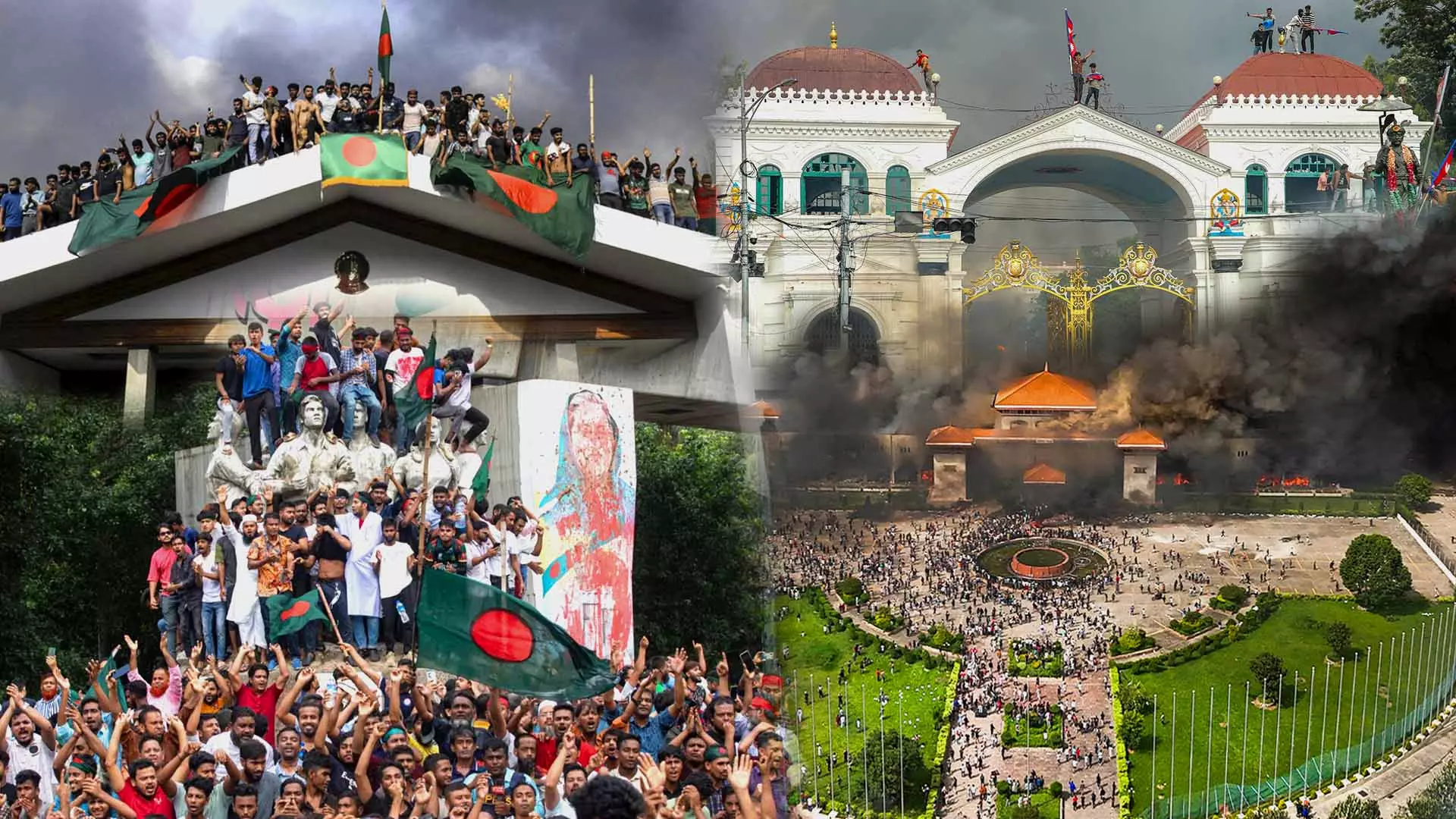
Then Bangladesh, now Nepal: How youth is pushing out regimes in South Asia
From Dhaka to Kathmandu, protests against quotas and censorship reveal a common fire for fairness. Are we seeing a new youth awakening?

From Dhaka to Kathmandu, young voices are rewriting the language of protest in South Asia. Different triggers, same fire: fairness, freedom, and frustration with corruption.
In both Bangladesh and Nepal, the uprisings were not led by established political parties. Neither the Bangladesh Nationalist Party (BNP) nor Jamaat-e-Islami fronted the movement in Dhaka. Similarly, in Kathmandu, it wasn’t the Congress or the Maoists.
Instead, youth platforms—raw, spontaneous, and digital—drove the momentum.
Youth-led platforms
In Bangladesh, students rallied against what they saw as unfair quotas in government jobs. The government had decided to restore a 30 percent reservation for the descendants of 1971 war veterans. Students argued this policy would rob today’s youth of fair opportunities.
In Nepal, it was Hami Nepal, an NGO formed after the 2015 earthquake, that mobilised students. The group even urged them to show up in school uniforms and carry bags to amplify emotional impact if violence broke out.
“They have coordinators all over Nepal and they have been sending out messages asking students to come near the Parliament building to protest against the social media ban… Very importantly, the students, especially those from schools, were asked to come in school uniforms with school bags so that if something happens to them, there will be massive emotional backlash. Same as in Bangladesh,” said senior journalist Subir Bhaumik.
Protest triggers
The triggers in both countries varied but carried striking parallels. In Bangladesh, the quota issue acted as the flashpoint, sparking the anti-discrimination student movement. In Nepal, Prime Minister K.P. Sharma Oli’s social media ban lit the fuse, but behind it lay deeper frustrations: corruption, nepotism, and a broken system that Gen Z believes has failed them.
“The desired goal, as seen in Bangladesh last year, was to bring down the government… In Nepal it’s the social media ban. Out there, it was the quotas," said Bhaumik.
State response
Both countries saw a hard crackdown. In Bangladesh, clashes with the ruling Awami League’s student wing turned violent and bloody. In Nepal, at least 19 protesters have died in confrontations with security forces.
The state’s heavy hand only fuelled the fire. In Bangladesh, even after Sheikh Hasina’s government rolled back the quota order, students continued and broadened their demand to her resignation. In Nepal, once the social media ban was withdrawn, protesters didn’t stop. Their demand escalated to the resignation of Oli—and eventually, they succeeded.
Nepal’s protests went further than those in Bangladesh. While Bangladesh’s youth largely targeted the ruling Awami League, Nepal’s uprising vented its anger across party lines. Homes of leaders from the Congress, the Maoists, and Oli’s own party were attacked. No political elite was spared.
A shared story
So what connects Dhaka and Kathmandu? Both were youth-led. Both used digital networks to mobilise. Both endured harsh state crackdowns.
Bangladesh fought for fairer opportunities. Nepal rose for free expression. Together, they tell one story: South Asia’s youth are asserting themselves for rights like never before.
The content above has been transcribed from video using a fine-tuned AI model. To ensure accuracy, quality, and editorial integrity, we employ a Human-In-The-Loop (HITL) process. While AI assists in creating the initial draft, our experienced editorial team carefully reviews, edits, and refines the content before publication. At The Federal, we combine the efficiency of AI with the expertise of human editors to deliver reliable and insightful journalism.

